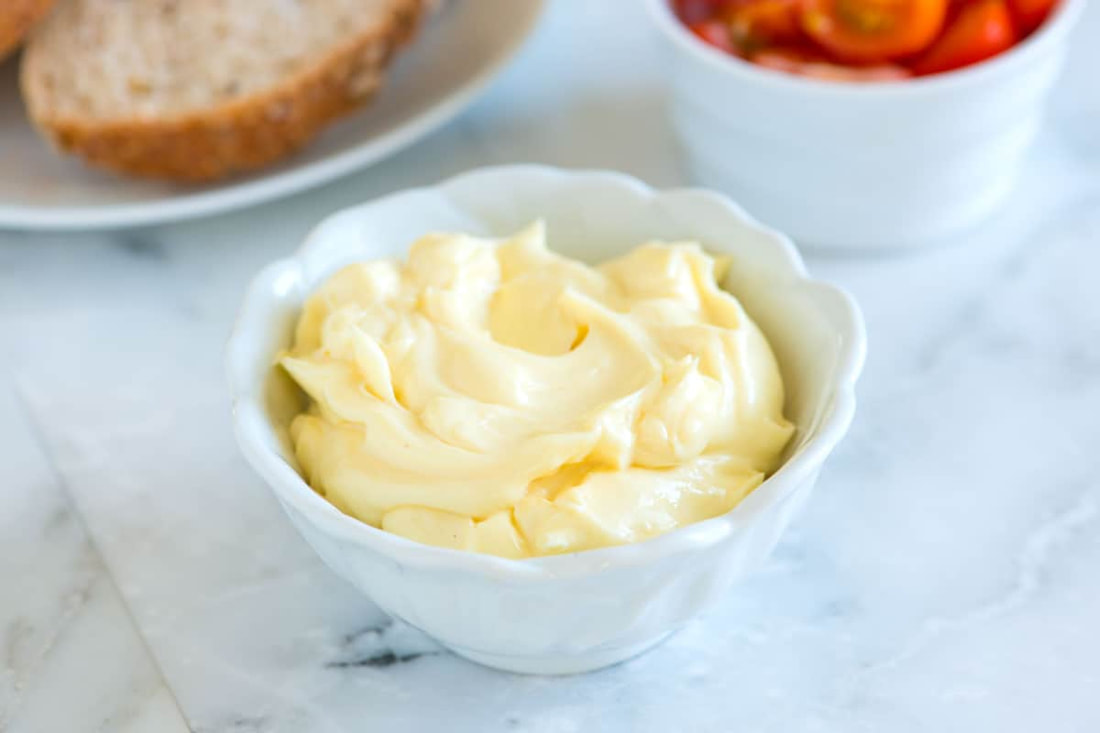|
The recipe and hints mainly come from inspiredtaste.net, and I added my own farmer info and tips about using duck eggs! Enjoy! Mayonnaise Ingredients - the basics The ingredients to make mayo are simple — we bet you even have them in your kitchen right now. You will need the following: Egg — You need to use egg to make mayonnaise. Duck eggs are great as they are creamier than chicken eggs. Mustard — I know that not everyone loves the flavor of mustard, but when it comes to making homemade mayonnaise mustard is sort of a magical ingredient. Mustard adds a bit of flavor, but it also helps to keep the mayonnaise stable. Along with the egg yolk, mustard helps emulsify the mixture, reducing the risk of our mayo breaking. Vinegar or lemon juice — Not only does a little acid like wine vinegar, champagne vinegar, and lemon juice add incredible flavor to the mayonnaise, it also helps to stabilize the mixture. Neutral Flavored Oil — By neutral flavored oil, I mean use an oil that is light in flavor. Quite a bit of oil is added to make mayonnaise, so it’s important to like the flavor of the oil you use. For a clean tasting mayonnaise use something like grape seed, safflower, avocado or canola oil. Since posting the recipe, quite a few readers have asked about olive oil in mayonnaise. You can use olive oil, but it can be a little overpowering so I prefer to use a brand that’s light and fruity. I think robust or spicy olive oils would be too much. You might also consider only replacing half of the oil called for in the recipe with olive oil and use something more neutral for the rest. The Five Steps For Making Mayonnaise - the method Prepare your food processor. I prefer to use the small bowl attachment that came with our food processor to make mayonnaise. Add an egg to the bowl of your food processor and process for about 20 seconds. Add mustard, vinegar, and salt then process for another 20 seconds. Slowly add the oil, in tiny drops, until about a quarter of the oil has been added. Adding the oil slowly is really important. If you were to dump it all in at once, you’d have mayonnaise soup! Taste the mayonnaise and adjust with additional salt and vinegar or lemon juice. Mayonnaise Variations I love this classic mayonnaise as-is, but love it even more when I make it my own. I almost always add a squeeze of lemon juice to brighten things up a little. I love how fresh it makes it taste. Fresh herbs, roasted garlic, chipotle, Sriracha or curry powder are all amazing options, as well. How to Fix Broken Mayonnaise When making mayonnaise, the worst, but not unfixable, thing that can happen to you is that the mixture breaks, leaving you with a curdled mess. The recipe we’ve shared tries to prevent this a few ways: we use a whole egg, which adds a little more liquid to the mix, mustard acts as an emulsifier from the get-go and we are careful to stream our oil in slowly. While we have never had this particular recipe for mayonnaise break on us, if it happens to you don’t fret! You really should be able to fix it. To fix broken mayonnaise, add about 1 teaspoon of mustard to a bowl then use a whisk to slowly beat the broken mayonnaise, bit by bit, into the mustard until it becomes emulsified and creamy again. Another trick is to add an egg yolk to a large bowl and slowly use a whisk to beat the broken mayo, bit by bit, into the yolk. Homemade Mayonnaise
Makes approximately 1 cup YOU WILL NEED 1 large egg at room temperature 1 tablespoon Dijon mustard 1 tablespoon red or white wine vinegar 1/4 teaspoon salt, or more to taste 1 cup (240 ml) neutral flavored oil, grapeseed, safflower or canola are best 1 teaspoon fresh lemon juice, optional DIRECTIONS PREPARE EQUIPMENT
TIPS
0 Comments
Leave a Reply. |
AuthorI'm Farmer Megan with a life full of cackles, clucks, quacks, weeds, crazy kitten, and one tiny, senior, blind dog. Archives
May 2024
Categories
All
|

 RSS Feed
RSS Feed